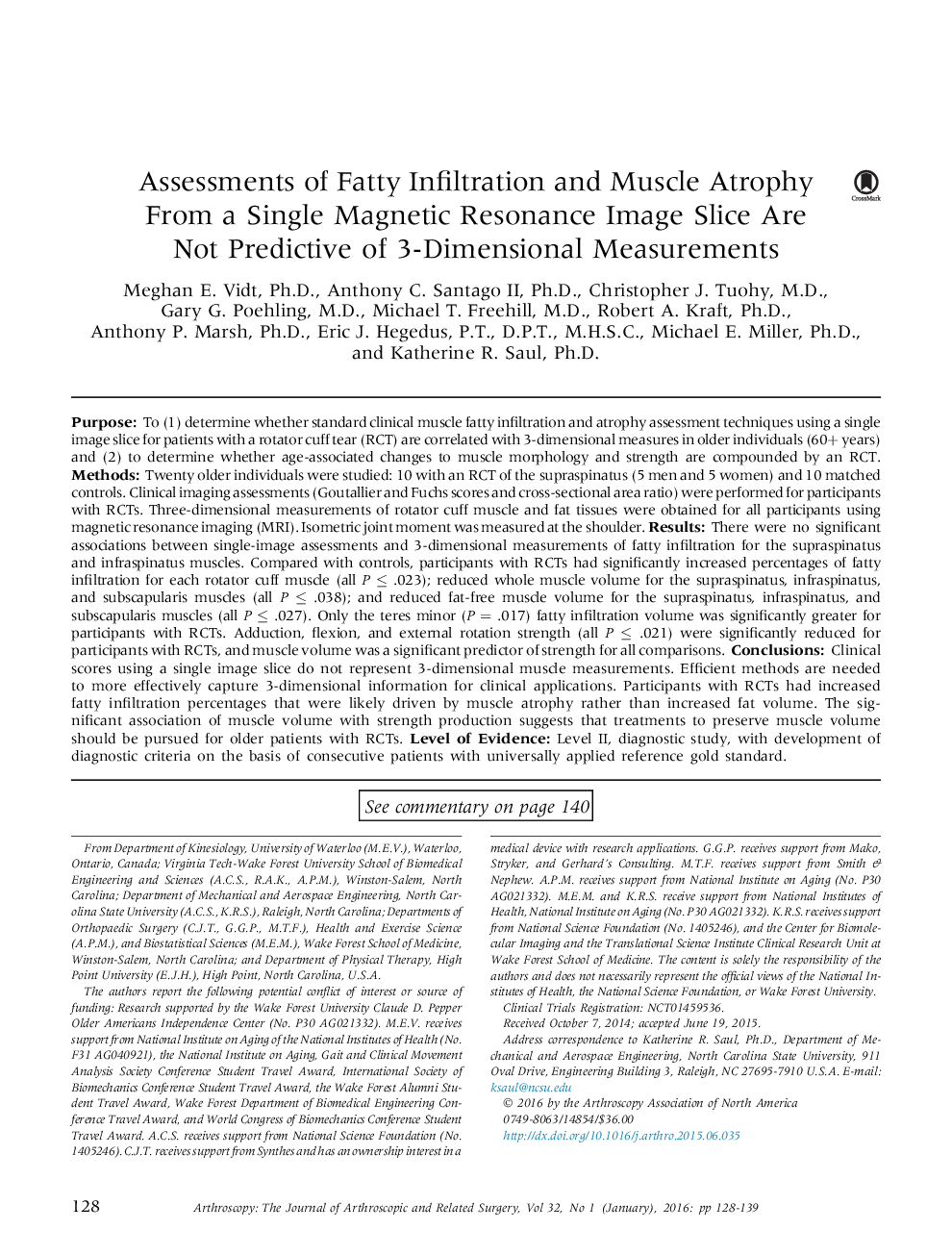| Article ID | Journal | Published Year | Pages | File Type |
|---|---|---|---|---|
| 4042271 | Arthroscopy: The Journal of Arthroscopic & Related Surgery | 2016 | 12 Pages |
PurposeTo (1) determine whether standard clinical muscle fatty infiltration and atrophy assessment techniques using a single image slice for patients with a rotator cuff tear (RCT) are correlated with 3-dimensional measures in older individuals (60+ years) and (2) to determine whether age-associated changes to muscle morphology and strength are compounded by an RCT.MethodsTwenty older individuals were studied: 10 with an RCT of the supraspinatus (5 men and 5 women) and 10 matched controls. Clinical imaging assessments (Goutallier and Fuchs scores and cross-sectional area ratio) were performed for participants with RCTs. Three-dimensional measurements of rotator cuff muscle and fat tissues were obtained for all participants using magnetic resonance imaging (MRI). Isometric joint moment was measured at the shoulder.ResultsThere were no significant associations between single-image assessments and 3-dimensional measurements of fatty infiltration for the supraspinatus and infraspinatus muscles. Compared with controls, participants with RCTs had significantly increased percentages of fatty infiltration for each rotator cuff muscle (all P ≤ .023); reduced whole muscle volume for the supraspinatus, infraspinatus, and subscapularis muscles (all P ≤ .038); and reduced fat-free muscle volume for the supraspinatus, infraspinatus, and subscapularis muscles (all P ≤ .027). Only the teres minor (P = .017) fatty infiltration volume was significantly greater for participants with RCTs. Adduction, flexion, and external rotation strength (all P ≤ .021) were significantly reduced for participants with RCTs, and muscle volume was a significant predictor of strength for all comparisons.ConclusionsClinical scores using a single image slice do not represent 3-dimensional muscle measurements. Efficient methods are needed to more effectively capture 3-dimensional information for clinical applications. Participants with RCTs had increased fatty infiltration percentages that were likely driven by muscle atrophy rather than increased fat volume. The significant association of muscle volume with strength production suggests that treatments to preserve muscle volume should be pursued for older patients with RCTs.Level of EvidenceLevel II, diagnostic study, with development of diagnostic criteria on the basis of consecutive patients with universally applied reference gold standard.
